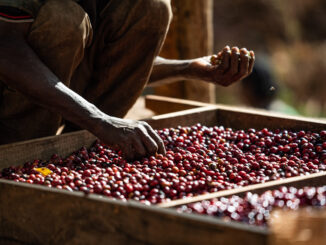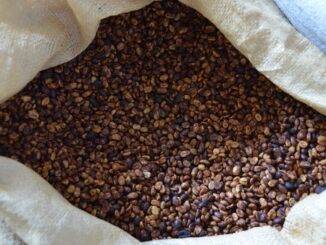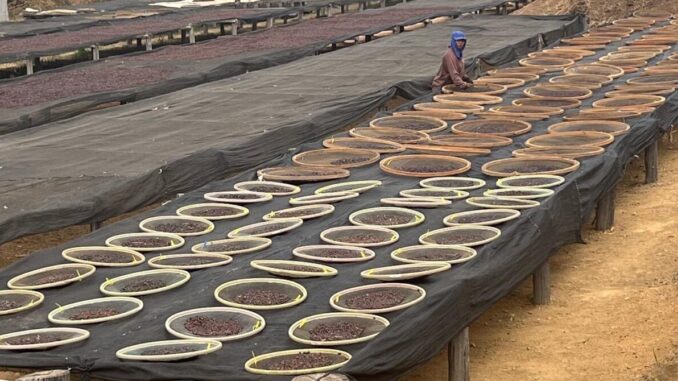
We start a new series on coffee-processing methods by looking at the natural process.
BY TANYA NANETTI
SENIOR ONLINE CONTRIBUTOR
Photos by Sarah Allen
There’s a common misconception that coffee always tastes the same: bitter or dark, with no distinctive flavor. But there is much more to coffee, and its flavor depends on many different factors: country of origin, varieties, processing, and roasting style, to name a few. This series will explore different processing techniques and fermentation styles used by coffee producers.
Let’s get to know the first type, natural process.
Natural Process Basics
The natural (or dry) process is the oldest and perhaps most intuitive method of coffee processing. It requires no machinery and can be done by hand. Immediately after harvest, coffee cherries are spread in thin layers and left to dry in the sun for two to six weeks. Traditionally, coffee cherries were spread out on the ground, but now they may be loaded onto raised beds, bricks, tables, or cement squares.
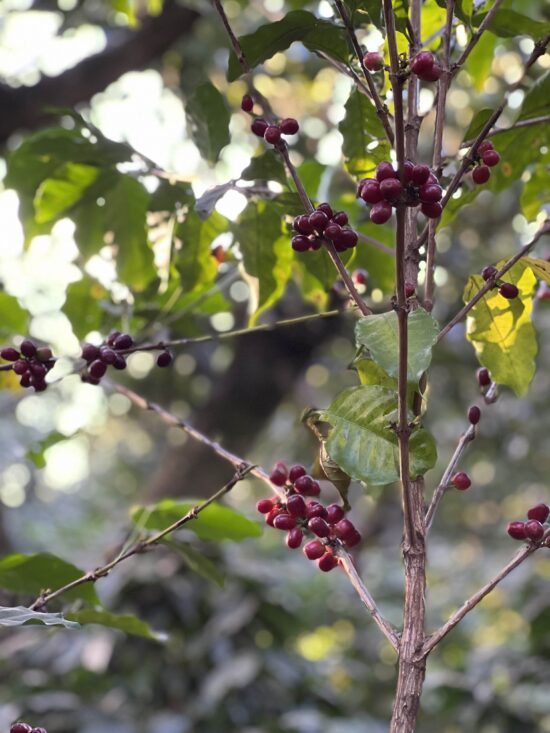
Once the cherries are laid out, they stay there throughout the whole drying process. At this point, human work intervenes: To slow down the process of natural fermentation and reduce the risk of mold or rot, the cherries must be turned regularly. When the coffee is finally dried, the remaining fruit and husk are mechanically removed, then the coffee is ready to be stored and prepared for export.
How the Natural Process Affects Flavor
Though the taste of coffee depends on many factors, we can outline some general characteristics of naturally processed beans. Regardless of origin, they are often rich and heavy in body. The process will usually add fruity flavors, thanks to the long interaction of the cherries’ natural sugars with the beans. Typical notes include strawberry, blueberry, or tropical fruit. The natural process can also add flavors often described (especially by its most vehement detractors) in unpleasant terms like wild, fermented, or barnyard.
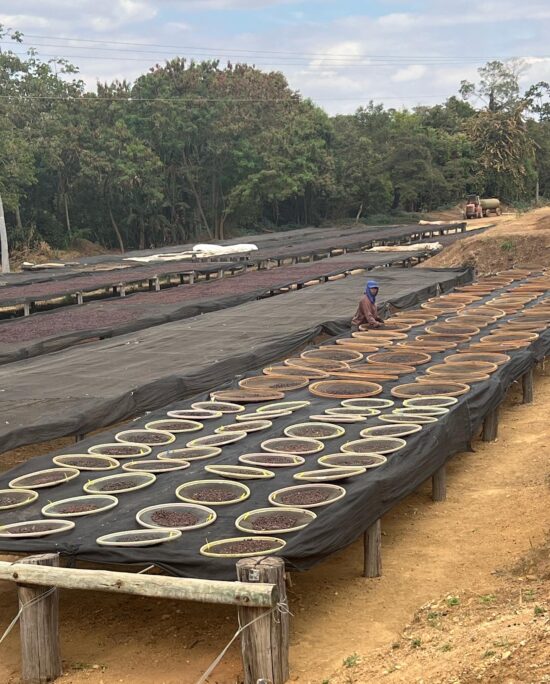
Why Use the Natural Process?
Producers may choose not to go with the natural method for several reasons. First of all, the process can be unpredictable, leading to less consistency in coffee flavors and more difficulty in replicating flavors obtained in past harvests. This unpredictability creates a greater risk of waste due to mold or other defects, which would decrease a producer’s income. Natural fermentation can also be more expensive due to higher labor costs, as the long and tedious process of regularly raking and rotating the cherries requires extra care and manpower.
It is also important to consider that the natural process is only suitable for sufficiently dry regions. In Kenya, for instance, there are two distinct rainfall seasons and two harvest seasons. The main crop between October and December and the early crop between May and July both happen during the rainy seasons, making natural fermentation difficult to utilize there.
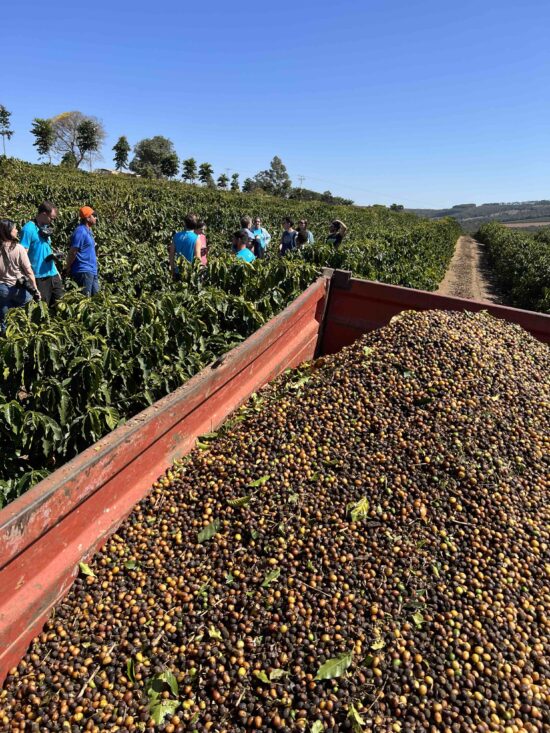
A Process That Can Bring Out the Best
So why choose the natural process? One reason is that it works well in dry countries with limited water availability, or in regions where it is difficult to access wet mills. The natural process can also be better for the environment because it doesn’t involve a great deal of water or electricity, both of which are necessary in large quantities to operate wet mills.
Natural fermentation, which was once frequently used only for cheaper coffees, is now gaining more traction. Thanks to the distinctive fruitiness the natural process brings out, it is now viewed as an opportunity to show the full potential of a coffee harvest.
ABOUT THE AUTHOR
Tanya Nanetti (she/her) is a specialty-coffee barista, a traveler, and a dreamer. When she’s not behind the coffee machine (or visiting some hidden corner of the world), she’s busy writing for Coffee Insurrection, a website about specialty coffee that she’s creating along with her boyfriend.


